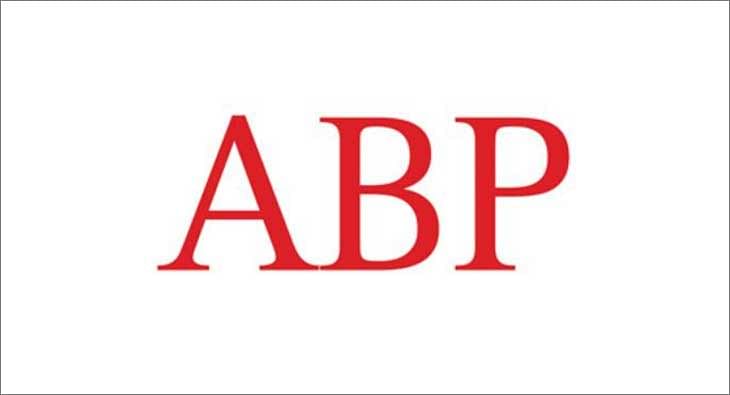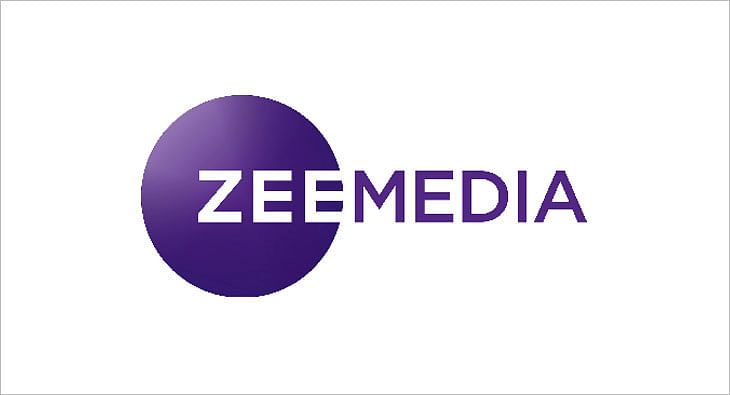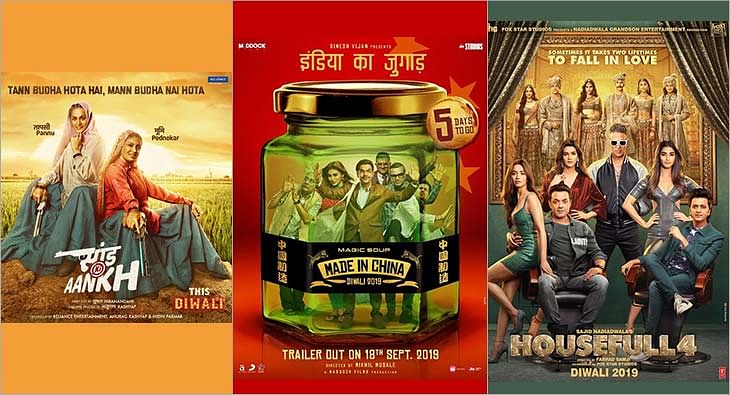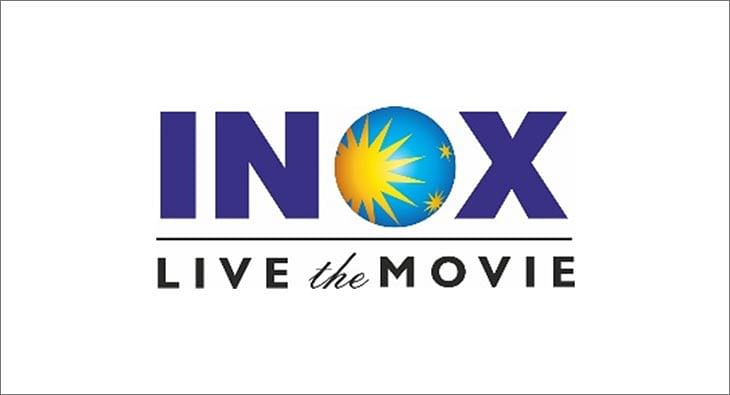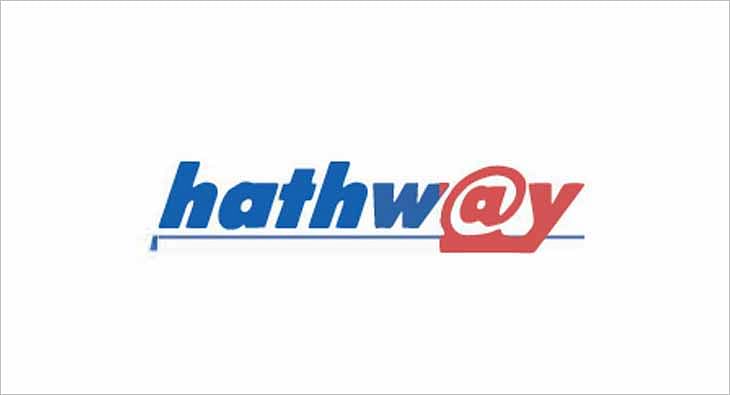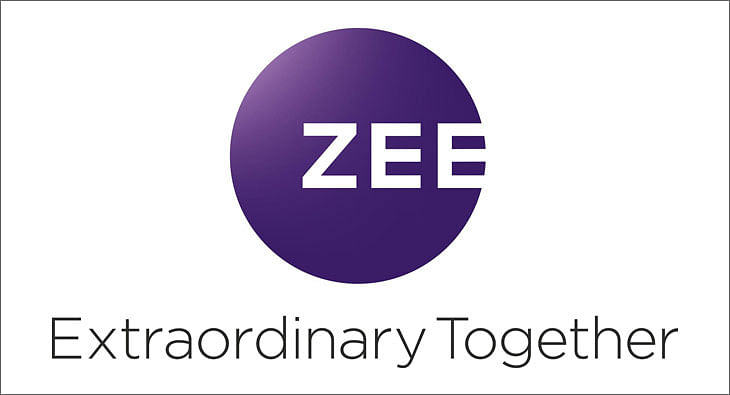The Great Indian CEO Hunt
The Indian media industry is growing rapidly and a strong sign of that is the increasing number of ‘headless’ organisations. At least five organisations are currently without a CEO. There are operations in the pipeline that are looking for a CEO, and then there are organisations whose CEOs are under speculations already.

The Indian media industry has not seen a churn like this in years, and where talent is becoming a matter of concern in the senior management and middle management levels of various media entities, the top management has not escaped the pressure either. At least five media organisations are currently ‘headless’ or without a CEO or CEO equivalent.
These include STAR News, who lost its CEO Uday Shankar to STAR India. Even in STAR India, Shankar has gone as a COO, while Paul Aiello, CEO, STAR TV, is currently the acting CEO of STAR India. With Rajat Jain finally announcing his move to Mobile2win, Walt Disney Television International’s hunt for a CEO is even more accentuated.
Shantonu Aditya’s move to UTV Communications as CEO has left Sahara One Media and Entertainment without a CEO, Radio One lost its CEO Rajesh Tahil recently and no replacement has been identified yet. Also on the list is aMap, who lost its CEO Tapan Pal to INX Media, where he has joined as Chief Research Officer.
Viacom-18, the newly formed entity between Viacom and TV-18, is aggressively looking for a CEO; Reliance’s plans for CEO for its entertainment entities has been known for a while, and the media even had rumours of Sameer Nair and Peter Mukerjea heading in that direction, when Nair and Mukerjea were still with STAR India. There have been speculations about Miditech looking for a CEO for a new channel it has been contemplating.
Then there are examples like Fever 104 FM, where Keerthi Vasan, Business Head, HT Music, is the head of the station, however, the station as yet does not have a COO or CEO. To think that so many more ventures are in the pipeline makes the CEO hunt a lot tougher.
Some CEOs are already surrounded by market speculations – one of the recent names was none other than Zee Entertainment Enterprises Ltd’s CEO Pradeep Guha. The rumour was quashed even before it made it to some section of the media, but the fact that the rumour was there reiterates the pressure on the professionals at this level, and even worse on the people who are looking for talent at this level.
Challenges of the CEO Hunt
Players from the field like Rekha Koshy, Director, Accord, an executive search firm where Koshy leads the Media, Entertainment and Communication vertical nationally, believes that not just the CEO, but the second rung, the CxO rung is also a difficult level to look for.
Giving the broader picture, she said, “The Indian economy as a whole, and the media and entertainment industry in particular, is seeing unprecedented growth leading to a huge demand-supply mismatch for ‘Leadership talent’. The industry and most players had not anticipated this level of growth or mismatch, and hence, have been caught unawares and are clearly struggling to handle this situation.”
Agreeing with her, Korn Ferry’s Partner Ashutosh Khanna asked, “Where is the talent? Just a year ago, if a CEO moved on, you just knew the names that were there for the post, where are the names now with the number of positions that are vacant?”
Palak Ahuja of Essnee Managment Consultants, a media executive search company, shares a similar view. According to her, “It is a combination of the fast expanding industry and the increased opportunities which are leading to a shortage in availability of professionals at the top-most level. Combined with that, the dynamic nature of the industry where the rules of the games are being rewritten every day, it is not easy to find the right fit for any organisation.”
While lack of talent is the first challenge, the second challenge identified is that media as a sector is at a nascent stage in India with limited in-house talent, particularly in emerging areas like radio, filmed entertainment, animation, film exhibition and distribution, etc. Koshy said, “Many Indian managers have not successfully scaled up to global expectations due to multiple reasons such as operating in monopolies; lack of competition; a lack of exposure to matrix organisations; and lack of training to move from functional specialist roles to general management roles.”
The challenge interestingly has been the unrealistic expectations from the India market. The HR head of a leading broadcast network explained that one problem that had led to so many vacant spots was the expectations from the international giants following their investments in India. The HR head said, “India is on the globe and everyone wants to invest, but there are unreal targets, and failing to achieve those has put pressure on the heads of various organisations.”
The final change is the lack of leaders in the making. Koshy elaborated, “The media business in the country for a long time perhaps was best described as more entrepreneur/iconic CEO personality driven business rather than a business that built effective second line of managers. Thus, in a period of rapid growth it has resulted in a cross migration of talent which has been exposed to fluid, dynamic, competitive conditions in global matrix-ed organisations across developed industries such as consumer, FMCG, and financial services moving into this exciting growth area.”
The trail ahead on the CEO Hunt
Khanna is of the opinion that an organisation without the CEO is an organisation without a vision. “Such a scene can last a few months, but beyond that it is a problem in the longer interest of the organisation. I think many in the industry have realised this, and not only are they working towards solving this ‘hunt’, but also on finding long term solutions.”
“There is a small but good talent pool, and tried and tested leaders will be wooed to lead other media business with perhaps more attractive options resulting in increased salaries. Additionally, we see a trend over the next 18 months of talent getting picked from related industries, markets and geographical locations. Also, we believe that both clients and employees now clearly understand the difference between various life cycles within a company and hence, focusing on the best fit – a newer trend that will result in the emergence of the ‘start-up CEO’, ‘the grow the business CEO/team’ and so on would also be seen,” added Koshy.
The observers also explained that as India established itself on the global entertainment and media map, one would see global talent movements to make up for the obvious shortages. Also, there are expectations to see an emergence of local talent from the middle management rungs that would be forced to take on larger responsibility earlier on in their careers.
As the business grows larger and ownership becomes diversified, the need to get in a professional CEO leads to a search of appropriate professionals and with the lack of talent within, it would take time, effort and a lot of handholding and learning for the promoters, investors and the possible candidates, in making that transition. The challenge would be to manage this process most effectively, which we believe we are uniquely positioned to help our client do.
Read more news about (internet advertising India, internet advertising, advertising India, digital advertising India, media advertising India)
For more updates, be socially connected with us onInstagram, LinkedIn, Twitter, Facebook Youtube & Whatsapp
You May Also Like
HT Media posts Consolidated Total Revenue of Rs 580 crore in Q2
Chairperson and Editorial Director Shobhana Bhartia says due to lower commodity prices and control on costs there has been an improvement in operating profit
HT Media has posted a Consolidated Total Revenue for Q2, 2020 at Rs 580 crore.
As per a statement released by the company, EBITDA for Q2’20 increased by 139%, and margins at 14% vis-à-vis 6% in previous year. This has been driven by softening of newsprint prices and continued focus on cost.
The Net Cash position at a consolidated level continues to be strong.
The Print ad revenue has declined due to sluggish volumes, even as yields have improved. National advertising continues to be soft, although local advertising witnessed growth.
Savings in raw material costs have driven improvement in EBITDA margins.
Chairperson and Editorial Director Shobhana Bhartia said, “Slowing economic growth has hit advertising spends in key categories, putting pressure on revenues across the media industry. As a result, our Print and Radio (on like to like basis) businesses saw revenues dip as compared to a year-ago. However, thanks to lower commodity prices and a tight control on costs, we saw an improvement in our operating profit. On the digital front, Shine, our online recruitment portal has shown good progress and continues to grow. Our outlook for the coming quarter remains cautious, given overall economic sentiment and macroeconomic trends. Cost-control and falling commodity prices should help protect our margins.”
Read more news about (internet advertising India, internet advertising, advertising India, digital advertising India, media advertising India)
For more updates, be socially connected with us onInstagram, LinkedIn, Twitter, Facebook Youtube & Whatsapp
ABP Group posts Rs 15.70 crore as net profit in Q1 FY20
The group’s total operating income stands at Rs 365.55 crore
ABP Group has posted a net profit of Rs 15.70 crore in the first quarter of FY20, as per media reports.
The group’s total operating income stands at Rs 365.55 crore.
It’s net profit for the fiscal ended March 31, 2019, was down 68% to Rs 31.90 crore compared to the previous fiscal.
The Profit Before Interest Lease Depreciation and Tax (PBILDT) has also dropped 53.52% to Rs 107.12 crore.
The group has six news channels - ABP News (Hindi), ABP Ananda (Bengali) ABP Majha (Marathi) and ABP Asmita (Gujarati), ABP Sanjha (Punjabi) and ABP Ganga (Hindi).
Read more news about (internet advertising India, internet advertising, advertising India, digital advertising India, media advertising India)
For more updates, be socially connected with us onInstagram, LinkedIn, Twitter, Facebook Youtube & Whatsapp
Zee Media posts consolidated revenue of Rs 137.03 crore for Q2 FY20
ZMCL has recorded 4.4% growth in operating revenue for first half of FY20
Zee Media Corporation Ltd (ZMCL) has posted a 4.4 per cent growth in operating revenue to Rs 337.6 crore in the first half of FY20, as per media reports.
It has reported a consolidated revenue of Rs 137.03 crore for Q2 FY20.
In a statement, ZMCL has said: “During the quarter, the network expanded its footprint s into Southern India through the launch of Zee Hindustan in Tamil and Telugu languages. This is intended to make the network's content accessible to wider audience.”
The operating expenditure in Q2FY20 has dropped by 21.7 per cent.
The statement further said: “EBITDA for HlFY20 improved by 34.1 per cent to Rs 1,029 million from Rs 767.5 million EBITDA for H1FY19, while the same declined by 9.4 per cent to Rs 370.2 million from Rs 408.7 million for the corresponding period last financial year. EBITDA Margin grew from 23.7 per cent in H1FY19 to 30.5 per cent in HlFY20, while growing from 24.2 per cent in Q2FY19 to 27 per cent in Q2FY20.”
Read more news about (internet advertising India, internet advertising, advertising India, digital advertising India, media advertising India)
For more updates, be socially connected with us onInstagram, LinkedIn, Twitter, Facebook Youtube & Whatsapp
No slowdown here: In-cinema ad rates up by at least 50% for 3 big Diwali releases
Housefull 4, Made In China and Saand Ki Aankh ready to hit the silver screen this week, with the hopes of giving brands the eyeballs they look for in theatres
It’s that time of the year again when theatres gear up to pocket maximum gains. Diwali is here and there are three films ready to hit the silver screen this week--Housefull 4, Made In China and Saand Ki Aankh. The festive period brings much joy to exhibitors, distributors and theatre owners because it ensures footfalls, giving brands the eyeballs they look for. In fact, industry experts don’t feel that economic slowdown this year has impacted in-cinema advertising. While they are concerned about three movies clashing during Diwali, they predict 50-100 per cent rise in ad rates during this period.
Advertising moolah
Mohan Umrotkar, CEO, Carnival Cinemas, is expecting 60-70 per cent surge in advertisement topline compared to last year. “Going by the buzz and advance booking for these three releases, market is bullish. Advertisers have blocked most of the advt-slots during the festival period. Housefull 4, Made In China and Saand Ki Aankh all combined together should generate around Rs 350 crore topline at the box office during the festival week. We are expecting 60-70 per cent surge in the advertisement topline from last year. Also, this year we have added around 14 per cent new advertisers, and 4 per cent of them are first-time cinema advertisers,” he says.
But according to Siddharth Bhardwaj, Chief Marketing Officer - Head of Enterprise Sales, UFO Moviez, things have changed a lot in the last couple of years. “Since some films have not really lived up to their expectation, advertisers are spreading the spends all through the year. They are picking up far more number of titles in the year rather than focusing only on Diwali or Eid.”
“It is good for the industry because you can monetise the inventories beyond just big weeks. A lot of content- driven films have come up which has given us the opportunity to monetise more markets. It has put lesser pressure on Diwali. Most of the cinemas are sold out for Diwali. It becomes difficult to accommodate everything,” Bharadwaj opines. He also reveals that for this week, the inventories are already full.
Diwali ad rates
Experts reveal that ad rates differ from property to property and depends on location as well. But Diwali surely sees a massive hike in rates. This year, theatre owners are expecting 100 per cent rise in ad rates. While Umrotkar revealed that for Diwali, they are charging 100 per cent higher than the regular card rates, Girish Johar, trade analyst and film producer, shared that even the rates for putting up kiosks of brands go up during festivals like Diwali.
“It’s based on property. On a ballpark, ad rates double up. So if you are putting up a kiosk, they charge say Rs 50,000-25,000 for a month. During Diwali, they charge almost double because of the kind of footfalls theatres witness,” Johar revealed.
Economic slowdown? Not for Cinema!
This year, brands have been pulling back their spends on other mediums due to economic slowdown, but cinema seems unaffected. Calling entertainment business recession-proof, Johar explains, “If you see the other side, box office is up by 15-20 per cent. Yes, it is a bit subdued because the brands are in a wait-and- watch scenario. They are increasing their focus around consumption rather than awareness.”
Bharadwaj too seconded it by saying, “These are challenging times but our medium is very efficient. If you see economy has slowed down, but the cinema has grown instead.”
Clash cover
Three movies are clashing this Diwali which means shared screens and box office gains.
“It’s never good for us when two or more big-ticket films release together. If they would have come on different dates, there are chances that more advertisers will take advt. inventory in those weeks separately instead of that one particular week,” shares Umrotkar.
Read more news about (internet advertising India, internet advertising, advertising India, digital advertising India, media advertising India)
For more updates, be socially connected with us onInstagram, LinkedIn, Twitter, Facebook Youtube & Whatsapp
INOX Leisure Ltd sees 42% growth in total revenue
Profit After Tax up 327% to Rs 51 crore
INOX Leisure Ltd (INOX) has reported financials for the second quarter ending September 2019.
Its total revenue has risen to Rs 524 crore with a 42% growth from Rs 369 crore in the corresponding quarter in FY19. Its EBITDA has more than doubled to Rs 107 crore with a 121% growth, while the PAT stood at an impressive Rs 51 crore, up 327% from previous year’s second quarter.
Siddharth Jain, Director, INOX Group, said: “At INOX, setting new benchmarks is now a routine, thanks to our consistently sharp focus on luxury, service and technology and our uncompromised desire to offer our patrons, nothing but the latest and the best! We are delighted with our remarkable consistency on all parameters, and we are sure about maintaining the momentum and focus on innovativeness. Content once again proved that why we term it as the ‘hero’. Thanks to the creators of such spellbinding movies, which keep inviting our guests to our properties, and allowing us to pamper them with our signature hospitality. With the launch of Megaplex, we are delighted to further our endeavor of developing experience-driven cinema destinations of global standards, and we will continue to do so. On behalf of Team INOX, I assure all our stakeholders that we will continue to break barriers and exceed all expectations.”
Read more news about (internet advertising India, internet advertising, advertising India, digital advertising India, media advertising India)
For more updates, be socially connected with us onInstagram, LinkedIn, Twitter, Facebook Youtube & Whatsapp
Hathway Cable & Datacom reports 100% subscription collection efficiency in Q2
The broadband subscriber base has increased from the previous quarter’s 840,000 to 860,000
Hathway Cable and Datacom has reported subscription collection efficiency at 100%, and the broadband subscriber base has increased from previous quarter’s 840,000 to 860,000 in quarter ending September, as per media reports.
It has narrowed its consolidated net loss by 74% and the operating EBITDA has been reported 15% up to Rs 107.5 crore compared to Rs 93.1 crore a quarter ago.
The total income has dropped 2%, while the expenditure is down 6%.
In the financial results, the company has said the FTTH markets are leading growth in customer acquisition.
Read more news about (internet advertising India, internet advertising, advertising India, digital advertising India, media advertising India)
For more updates, be socially connected with us onInstagram, LinkedIn, Twitter, Facebook Youtube & Whatsapp
ZEEL posts 7.4% YoY growth in total revenue for Q2 FY20
ZEEL's domestic advertising revenue has grown 1.4% YoY in Q2FY20
Zee Entertainment Enterprises Limited (ZEEL) has reported a consolidated revenue of Rs 2,122 crore for the second quarter of FY20, recording a growth of 7.4% on YoY basis.
The Earnings Before Interest, Tax, Depreciation and Amortization (EBITDA) was recorded as Rs 692.9 crore with an EBITDA margin of 32.7%. PAT for the quarter was Rs 413.2 crore. The Profit After Tax (PAT) for the quarter was Rs 413.2 million, with a growth of 6.9% YoY.
During the second quarter, ZEEL’s consolidated advertising revenue grew by 1.2% YoY to Rs 1,224.7 crore. The domestic advertising revenues grew by 1.4% YoY to Rs 1169 crore.
ZEEL has posted 26.8% YoY growth in Q2FY20 domestic subscription revenue. ZEEL’s consolidated subscription revenue grew by 19.0% to Rs 723.5 crore during the quarter.
ZEEL’s total expenditure in Q2FY20 stood at Rs 1429.1 crore, higher by 9.9% YoY compared to Q2FY19.
While ZEE5 recorded a peak DAU (Daily Active User) base of 8.9 million in September 2019, ZEE5 users watched an average of 120 minutes of content on the platform in the same month.
During Q2 FY20, the television network had an all-India viewership share of 18.4%.
During the quarter, ZEEL’s international business revenue was Rs 208.2 crore. The advertising and subscription revenues for international business declined by 4.0% YoY and 21.5% YoY, respectively.
Zee Music Company has registered 7.1 billion views on YouTube in Q2.
Punit Goenka, Managing Director and CEO, ZEEL, said, “I am pleased with the performance we have exhibited during the quarter. Our entertainment portfolio continues to grow from strength to strength across all formats and maintained its leading position. Our television network has emerged stronger post the implementation of tariff order on the back of a strong customer connect and brand pull of its channels. ZEE5 continued to gain traction across audience segments and markets, driven by its compelling content library and expanding list of partnerships across the digital eco-system. This strong operating performance allowed us to deliver industry leading growth in both advertising and subscription despite the tough macro-economic environment. Domestic subscription growth of 27% has reaffirmed the value proposition our television network has built over the years. The impact of tariff order has now largely settled down and has brought increased transparency along with improved monetization. Our domestic advertising revenue growth, though significantly lower than historical trend, is higher than the industry growth. We have witnessed an improvement in ad spends through the quarter and we believe that the onset of festive season along with measures taken by the government will help revive the consumption growth.”
Read more news about (internet advertising India, internet advertising, advertising India, digital advertising India, media advertising India)
For more updates, be socially connected with us onInstagram, LinkedIn, Twitter, Facebook Youtube & Whatsapp




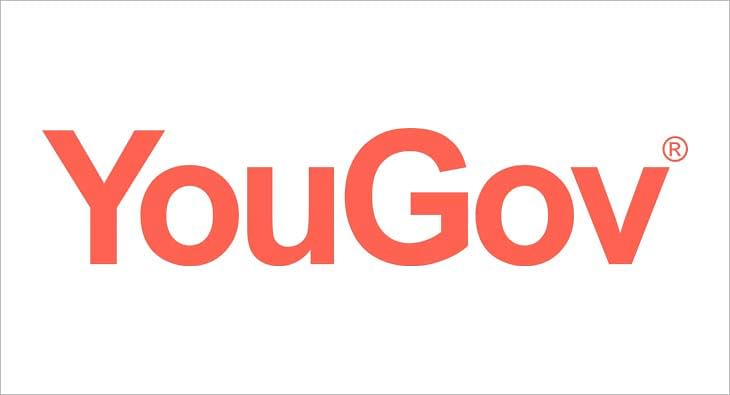
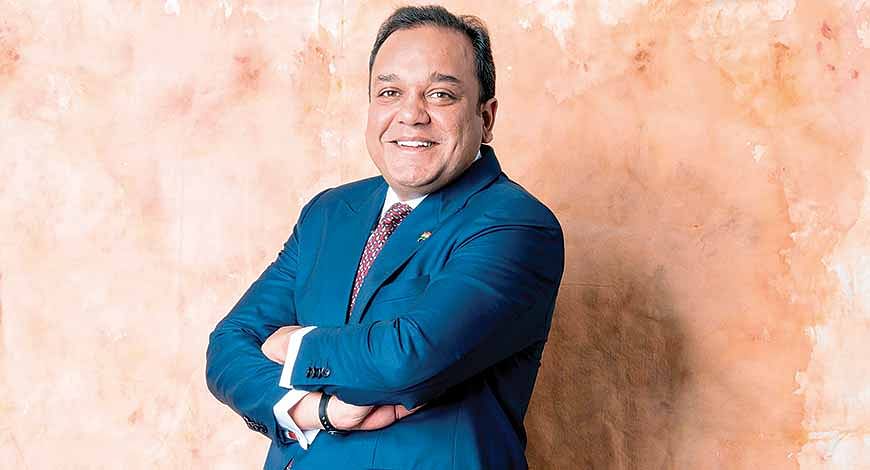
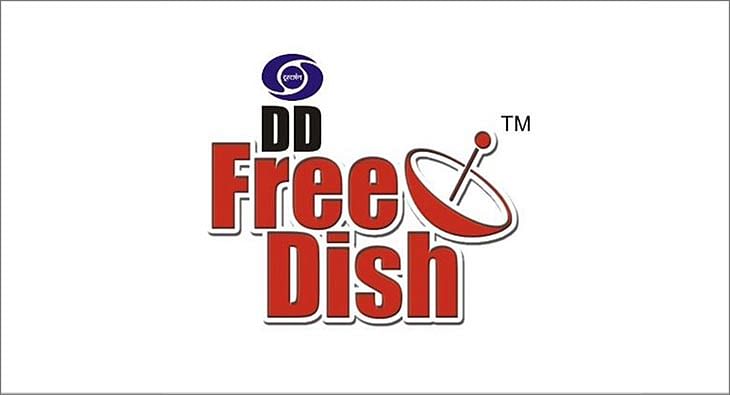







 Share
Share